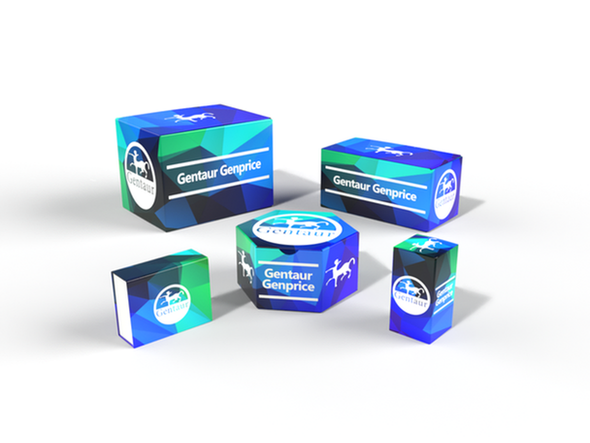740
Human Chloride intracellular channel protein 4 (CLIC4) ELISA Kit | AE61411HU
- SKU:
- 740-AE61411HU
- Availability:
- Usually ships in 5 working days
Description
Human Chloride intracellular channel protein 4 (CLIC4) ELISA Kit | AE61411HU | Gentaur UK, US & Europe Distribution
Species Reactivity: Human (Homo sapiens)
Abbreviation: CLIC4
Alternative Name: CLIC4L; DKFZp566G223; FLJ38640; H1; MTCLIC; huH1; p64H1; chloride intracellular channel 4 like
Application: ELISA
Range: 78.1-5000 pg/mL
Sensitivity: 30 pg/mL
Intra-Assay: ≤6.5%
Inter-Assay: ≤9.7%
Recovery: 1, 02
Sample Type: Serum, Plasma, Other biological fluids
Detection Method: Sandwich
Analysis Method : Quantitive
Test Principale: This assay employs a two-site sandwich ELISA to quantitate CLIC4 in samples. An antibody specific for CLIC4 has been pre-coated onto a microplate. Standards and samples are pipetted into the wells and anyCLIC4 present is bound by the immobilized antibody. After removing any unbound substances, a biotin-conjugated antibody specific for CLIC4 is added to the wells. After washing, Streptavidin conjugated Horseradish Peroxidase (HRP) is added to the wells. Following a wash to remove any unbound avidin-enzyme reagent, a substrate solution is added to the wells and color develops in proportion to the amount of CLIC4 bound in the initial step. The color development is stopped and the intensity of the color is measured.
Product Overview: Chloride channels are a diverse group of proteins that regulate fundamental cellular processes including stabilization of cell membrane potential, transepithelial transport, maintenance of intracellular pH, and regulation of cell volume. Chloride intracellular channel 4 (CLIC4) protein, encoded by the CLIC4 gene, is a member of the p64 family; the gene is expressed in many tissues and exhibits an intracellular vesicular pattern in Panc-1 cells (pancreatic cancer cells) .The 253-amino acid CLIC4 protein is 97%, 67%, and 66% identical to rat H1 and human CLIC1 and CLIC2, respectively. CLIC4 has 5 potential phosphorylation sites. Northern blot analysis revealed ubiquitous expression of a 4.5-kb CLIC4 transcript, with prominent expression in heart, placenta, and skeletal muscle as well as pancreatic carcinoma cells.
Stability: The stability of ELISA kit is determined by the loss rate of activity. The loss rate of this kit is less than 5% within the expiration date under appropriate storage condition. The loss rate was determined by accelerated thermal degradation test. Keep the kit at 37°C for 4 and 7 days, and compare O.D.values of the kit kept at 37°C with that of at recommended temperature. (referring from China Biological Products Standard, which was calculated by the Arrhenius equation. For ELISA kit, 4 days storage at 37°C can be considered as 6 months at 2 - 8°C, which means 7 days at 37°C equaling 12 months at 2 - 8°C) .






